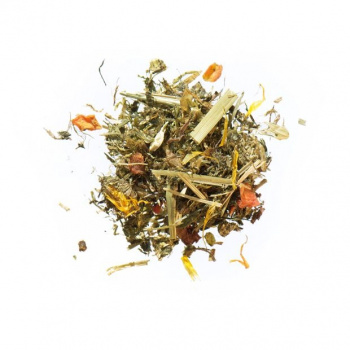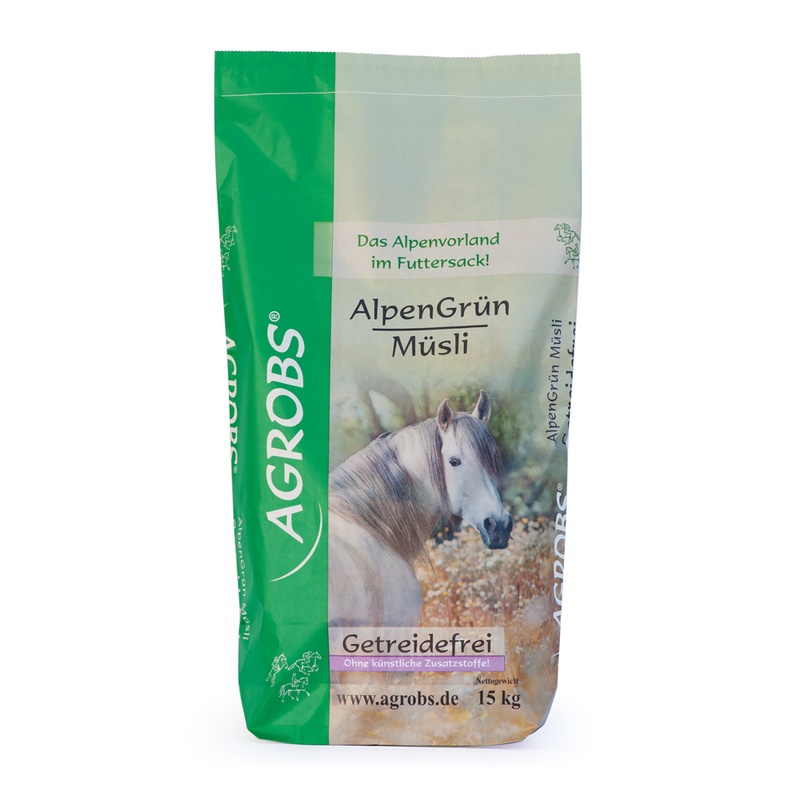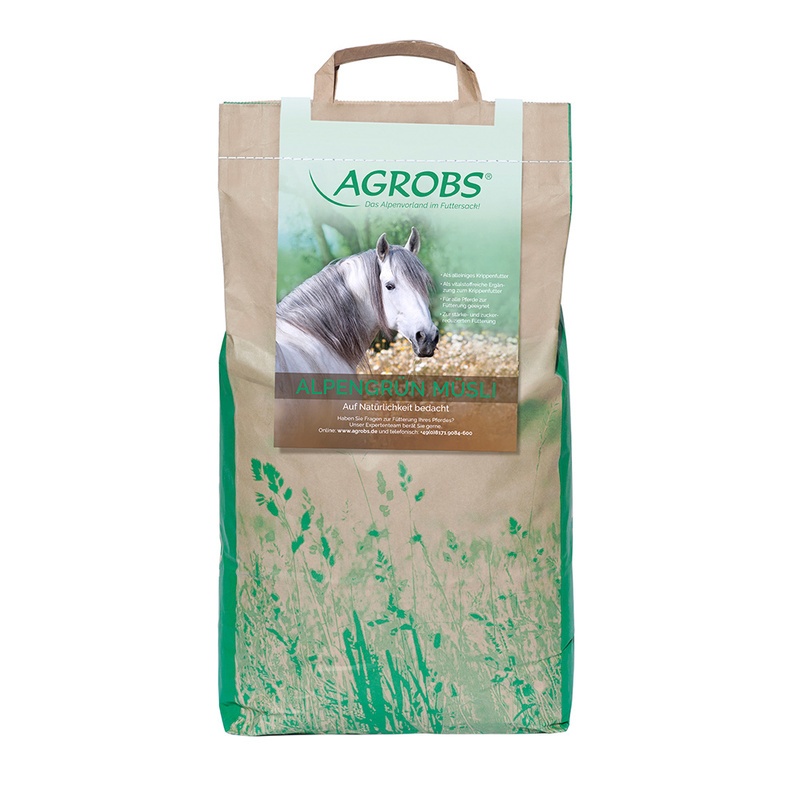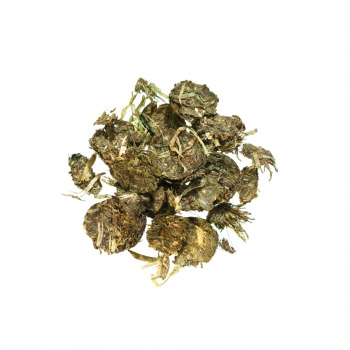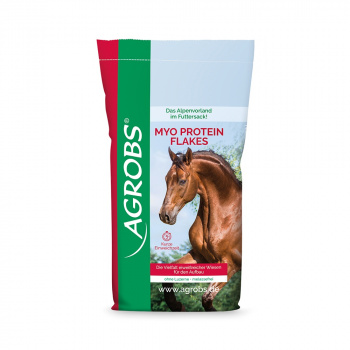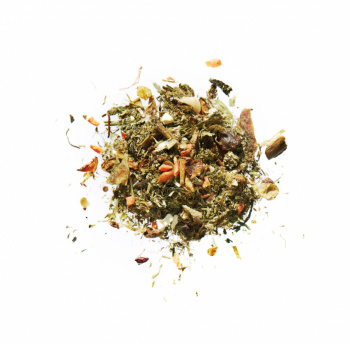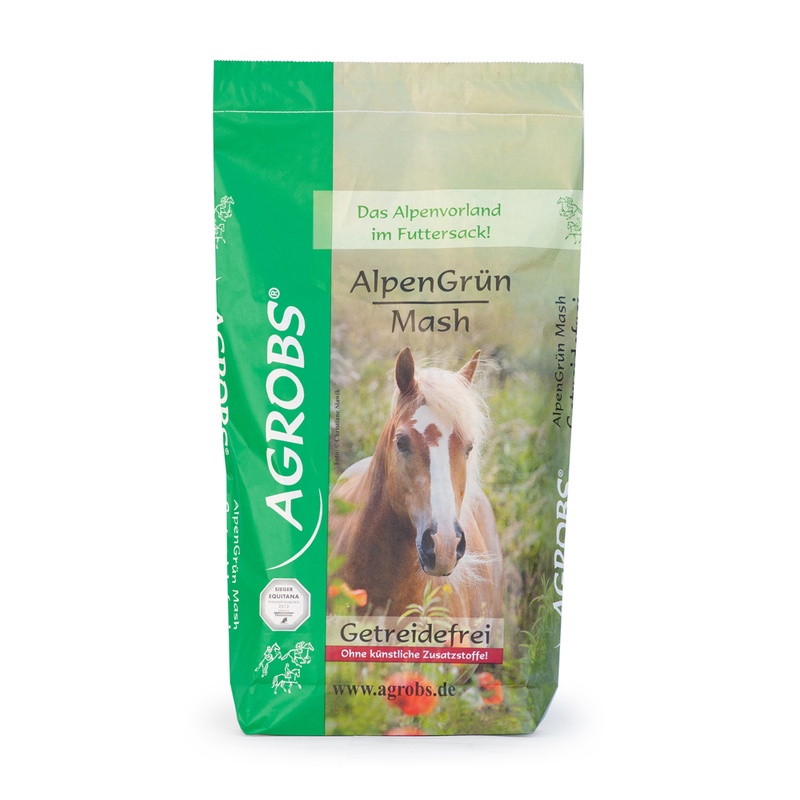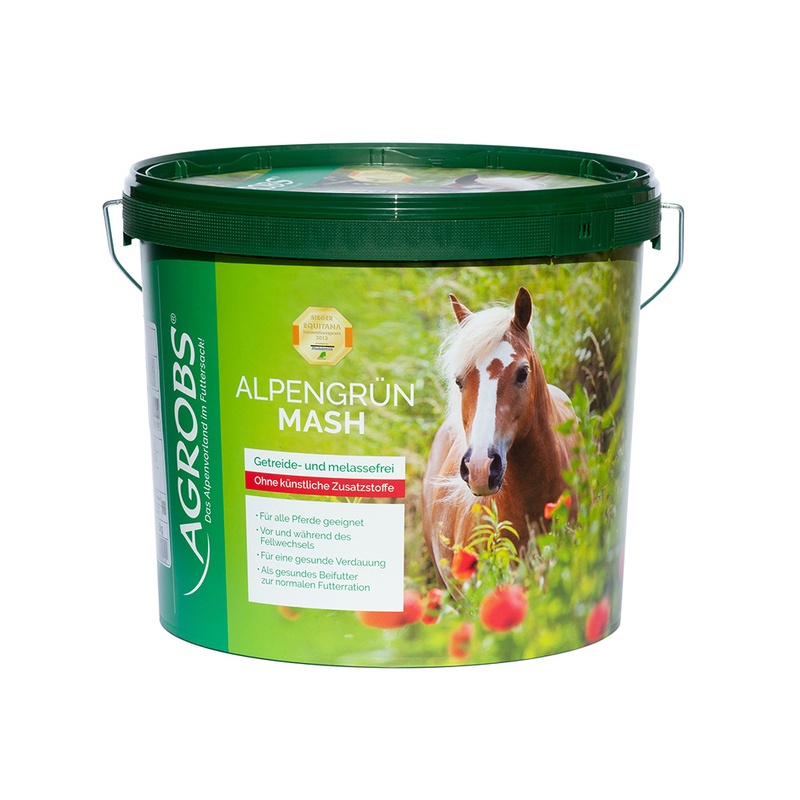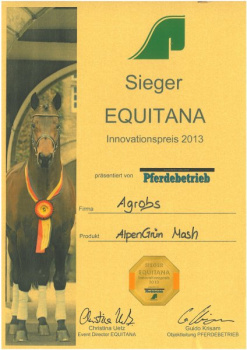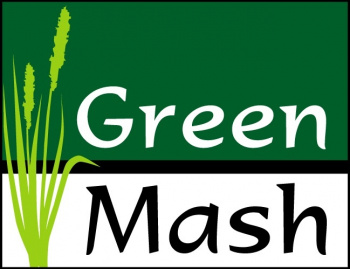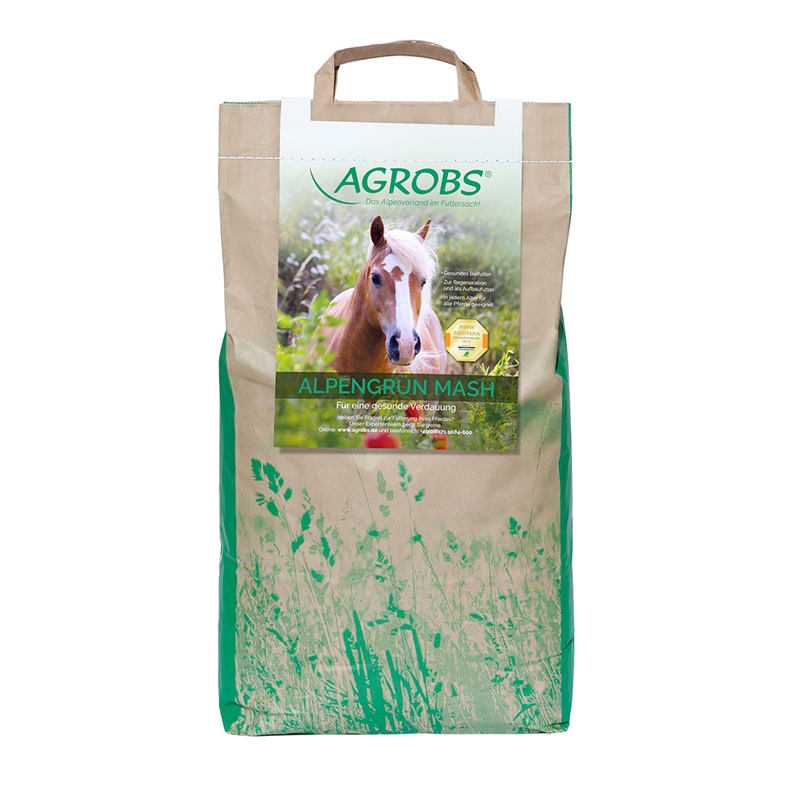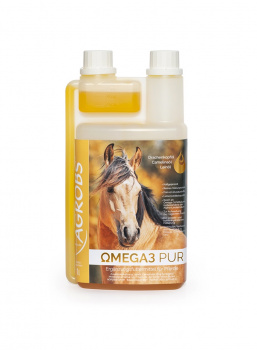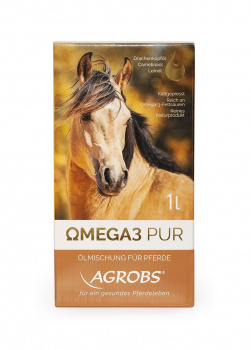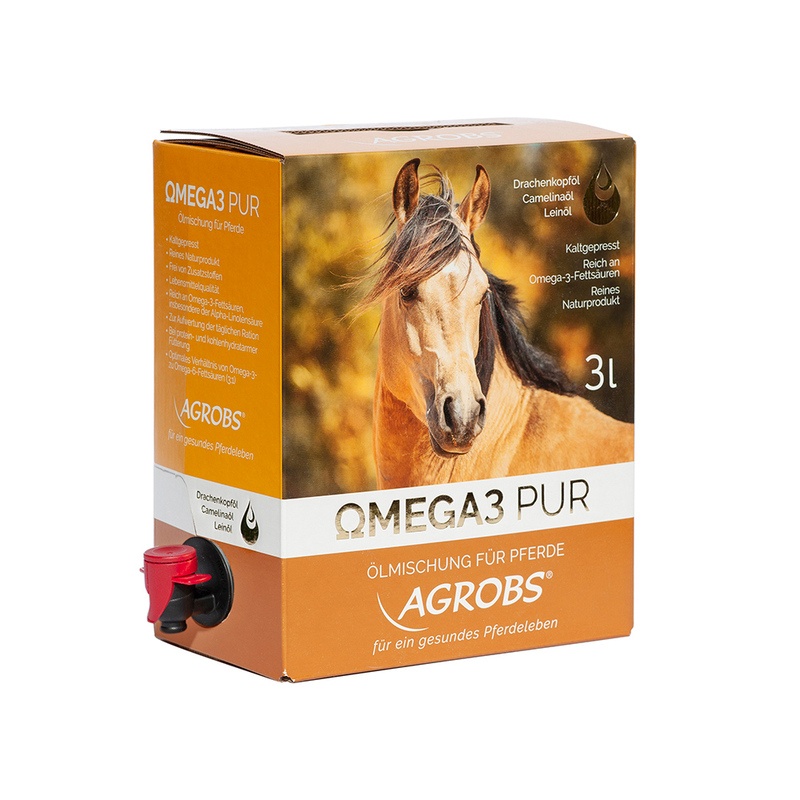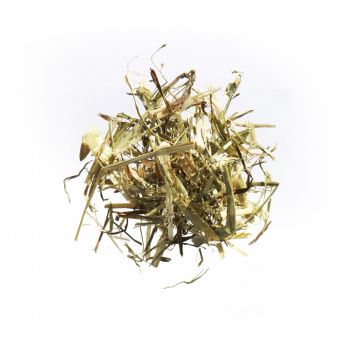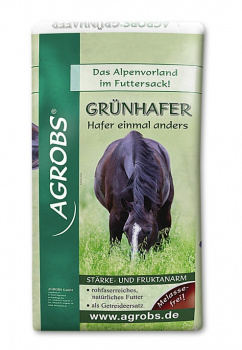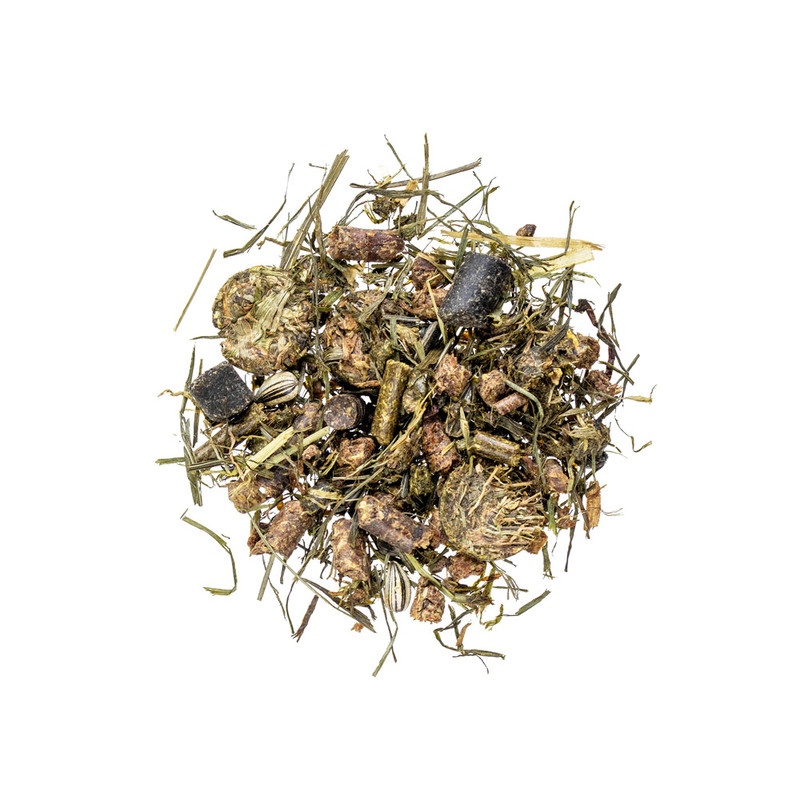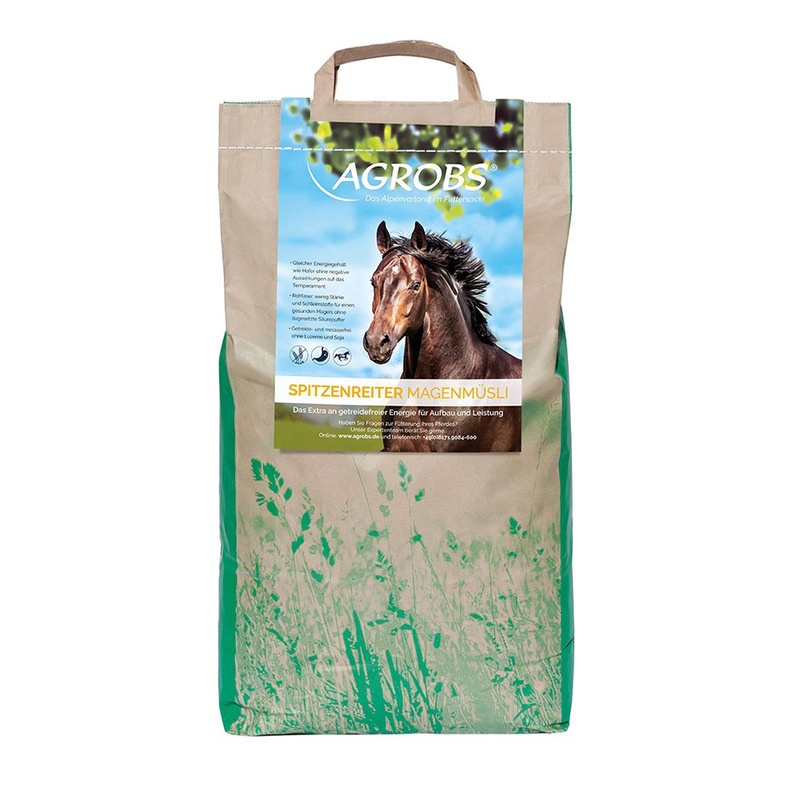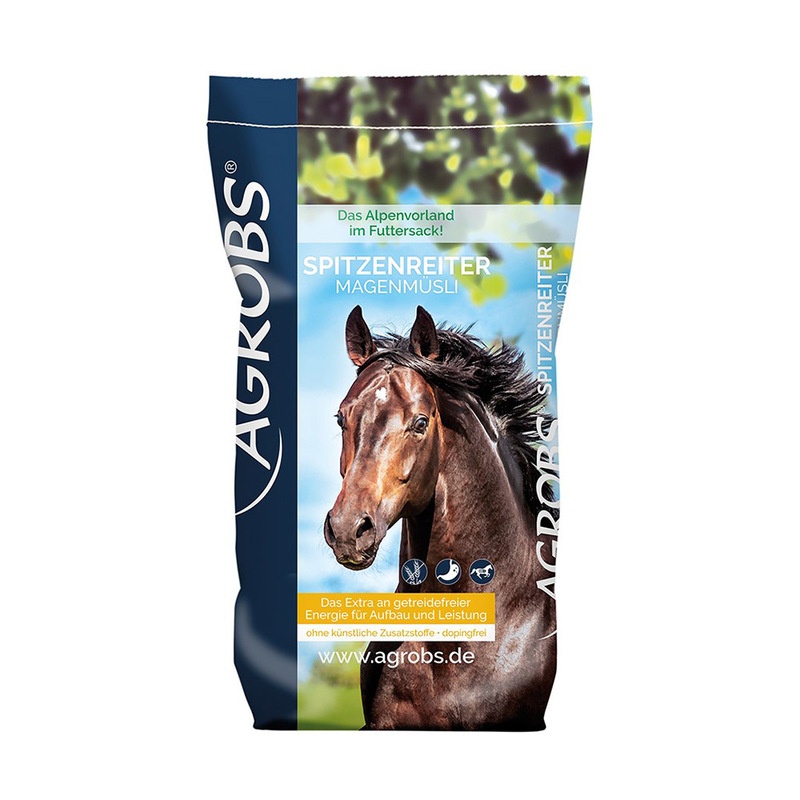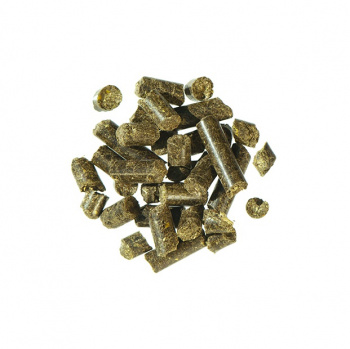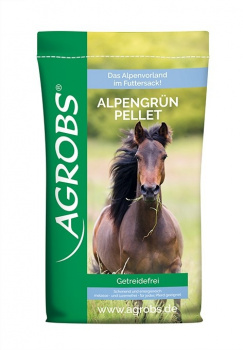
Equine stomach problems:
Detection. Treatment. Prevention!
Equine stomachs are anything but robust: depending on age and type of work, more than half of all horses suffer from stomach pains. Learn here which mistakes to avoid and the signs that your horse may have stomach problems.
Perfectly designed for plant-based diet: the equine stomach from the inside
Over millennia, the ancestors of today's horses evolved to adapt to their environment on the steppes. The equine stomach is such a product of evolution:
- It is relatively small, able to hold about 18 litres in an average-sized warmblood. It can be broken down roughly into two zones:
- The upper third of the stomach contains no glands in the lining and has the shape of an arched blind sac
- The lower part contains glands that form acidic gastric juices and a protective layer of mucosa
- These two zones are separated by the Margo plicatus, a sharp demarcating ridge
This division has several advantages for herbivores: the upper, less acidic area (blind sac) is home to microorganisms which begin to break down part of the carbohydrates found in the feed. Here, gases also collect that are produced by the reaction of saliva and gastric acid and as metabolic products of microorganisms.
Gut flora also lives in the first third of this glandular mucosa. The pH value continues to drop towards the exit of the stomach, and microorganisms are killed off in the acidic environment to prevent potentially pathogenic germs from entering the gut.
The hydrochloric acid in the feed's protein also prepares for later digestion in the small intestine. The stomach forms protective mucosa layers that line its glandular lower area to prevent damage from acid. However, this also means that the upper third of the stomach offers little resistance due to lack of protective mucosa.
Life as a buffet: horses don't recognise fixed mealtimes
Under natural conditions, this poses no problems for horses. From spring until fall they only need to lower their heads to find food that's high in crude fibre. Wild horses spend about two-thirds of the day choosing from grasses and herbs.
This means that small portions of thoroughly insalivated forage finds its way to their stomachs over many hours. Equine saliva contains many buffer substances that, after being swallowed, work to neutralise part of the gastric acid. In the middle third of the stomach, gastric juices are absorbed by the feed's crude fibre, and the stomach contents are blended together.
This results in the formation of a coating in the horse's stomach:
- In the lower third of the stomach, the feed is broken down into a liquid chyme so that it can be absorbed by the small intestine
- The middle third contains feed saturated by gastric juice, with more solid components
- The upper third houses a gas dome formed by metabolic activity of microorganisms
At the bottom of the stomach, the liquified chyme is continuously pushed into the small intestine. This activity, along with the buffering saliva and the absorbent properties of the crude fibre, prevents gastric acid from rising to the upper parts of the stomach – and this despite the fact that horses also constantly produce small amounts of stomach acid even when they are not eating.
From the steppes to the stable: horses now live by the rhythms of human life
Domesticated horses have adapted to eating habits transferred to them by humans: they now have mealtimes, mostly just two or three per day.
In most stables, horses are fed generous portions of starchy concentrate feed in addition to forage. In earlier times, when horses worked for many hours each day and the hay harvest was not always a sure thing, large amounts of concentrate feed was an essential part of the equine diet. Most leisure horses today are given concentrate feed for no clear reason – and often too much of it. Even sport horses are often fed more cereals than they need.
Horses are no more adapted to this kind of feeding today as they were back on the steppes: breeding has greatly changed the appearance of many breeds, but the equine stomach has remained unchanged through millennia,
Feed management that is not adapted to the physiology of the equine stomach often leads to problems, including stomach pain and gastric ulcers.
Horses are good at concealing pain
Many horses show signs of stomach problems that their owners easily overlooked over the years or did not associate with stomach pain. This is because these symptoms are often non-specific. Sometimes they are dismissed as typical horse issues – not surprisingly, considering how many horses are affected by stomach problems.
Take a closer look and consider the stomach if you notice the following irregularities:
- Your horse eats very little of the hay it is given (less than approx. 2 kg / 100 kg body weight with free access to hay), even though it appears to be healthy and its teeth are in sound condition. If you don't know the exact amount in kilogrammes, there are other signs you may notice: your horse may need an unusually large amount of concentrate feed to maintain a healthy weight. Or the stable owner may inform you that your horse is wasting too much hay and spreading it around in its box. Horses with stomach problems often lose weight when kept in groups, even when there is no drama in the herd and ample hay and feeding places
- Your horse pounces eagerly on concentrated feed for the first few minutes, but then stops eating and lie down. You may notice regular bouts of slight colic, especially after feeding
- Your horse yawns much more frequently in comparison to other horses, makes chewing movements even when not feeding, or salivates excessively
- Your horse barely tolerates being groomed or touched in the belly area. Your horse resists being saddled and girthed – turning away, pinning its ears, biting, or kicking
- When ridden, your horse is impulsive or lazy, and at the same time easily spooked. Your horse may grind his teeth, burp, or show signs of poor rideability
- Your horse may have a dull coat despite adequate nutrition, and poor muscle tone despite appropriate diet and training
Of course, many of these signs can have other causes – which is why it's often difficult to diagnose or rule out stomach problems. In cases of uncertainty, your vet can carry out a gastroscopy to examine the mucosa in the stomach more closely.
Gastric ulcers: different places mean different causes
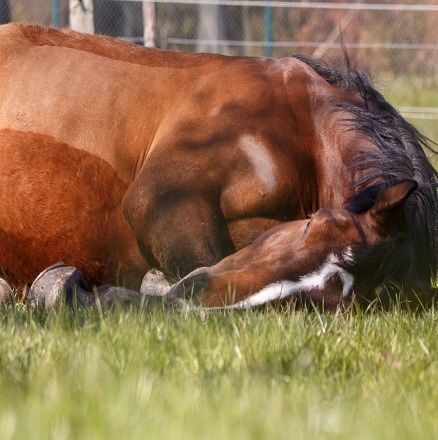 Horses with stomach problems (Equine Gastric Ulcer Syndrome, or EGUS) fall generally into one of two clinical pictures:
Horses with stomach problems (Equine Gastric Ulcer Syndrome, or EGUS) fall generally into one of two clinical pictures:
- In most cases, inflammation and ulcers occur in the area of the upper, glandless mucosa or at the sharp ridge demarcating it from the glandular mucosa. This is called Equine Squamous Gastric Disease (ESGD)
- The development of ulcers in the area of the pylorus is called Equine Glandular Gastric Disease (EGGD)
- Long intervals between eating forage will cause unnatural increases of gastric acid in the horse's stomach, damaging the mucosa in the unprotected upper part of the stomach
- Horses chew concentrate feed less thoroughly than they do forage. A warmblood horse needs about 10 minutes to eat 1 kilogramme of oats, but about 40 minutes to eat 1 kilo of hay. Less chewing means less salivation and in turn less buffering activity
- Large meals of concentrate feed increase the microbial activity in the upper part of the stomach: this faster breakdown of cereal starch produces volatile fatty acids and acidic CO² as metabolic products of the bacteria, which can also damage the mucosa
- Concentrate feed also won't absorb gastric acid the way forage will. It lies more heavily in the stomach as a tight mass and slows down the passage of chyme into the small intestine
- Excess acid can also be caused by a loss of appetite (for example due to stress): if a horse is provided with sufficient hay but cannot eat it in peace, this will naturally have the same effect as not being given enough hay
Other factors may cause ulcers in the lower stomach (EGGD):
- Very hard or sharp feed pieces (such as woody stems) can scratch the mucosa in the pylorus. This is because this area experiences strong muscle contractions whilst the feed is being transported to the small intestine
- Other factors can also cause an imbalance of acid production and mucus production: very vigorous exercise at faster gaits increases the risk of EGGD, presumably due to reduced blood flow to the digestive tract during physical exertion. Certain medications (such as anti-inflammatories) can cause problems in the pylorus region
Medical treatment may be required, depending on the severity and localisation of the ulcers. Your veterinary surgeon should be the one to decide whether changes in feeding, housing or training are sufficient or whether medications are necessary. In any event, however, an adjustment in management is necessary for a quick recovery and to prevent recurrences.
Better earlier than later: be mindful of your horse's needs!
Prevention of stomach problems and recovery from existing ulcers may require changes to your horse's daily routine. This may also mean changing stables – because some horses simply don't fit well together, or there may be fundamental errors in a stable's feeding management.
There are a few things to consider regarding feeding, housing, and training to keep the likelihood of your horse suffering from stomach pains to a minimum.
Tips for problem-free feeding:
- Depending on the breed, your horse should be given a daily minimum of between 1.5 and 2 kg of hay per 100 kg per body weight. The higher amount is preferable if your horse isn't susceptible to weight gain – some horses can be given unlimited access to hay
- Intervals between eating forage should not be longer than 4 to 6 hours. If manual feeding is only possible two or three times a day and your horse will gain weight from ad libitum hay, slow feeders and automatic hay dispensers may be a solution. Straw can bridge the time between feedings, but excess straw intake can also lead to stomach problems
- You can use AlpenHeu or products from our Pre Alpin line as a nutritious hay supplement when not enough hay is available. Products with longer fibres (Pre Alpin® Compact, Pre Alpin® Aspero) are recommended for horses with healthy teeth, as these stimulate chewing and thus saliva production. For older horses with weak teeth, soaked hay substitutes that do not require extensive chewing (Pre Alpin® Wiesenflakes, Pre Alpin® Senior) are essential, and should not be substituted with concentrate feed
- Give your horse the amount of cereals that it really needs, and no more than that. Larger quantities should always be divided over several smaller meals. Your horse should be given no more than 1 g of starch per kilogramme of body weight per meal and no more than 2 g of starch per kilogramme of body weight per day. To reduce cereals, you can also supplement your horse's feed with concentrate feed that's cereal-free and high in crude fibre (for example AlpenGrün Müsli, AlpenGrün Pellet or Spitzenreiter Magenmüsli)
- To improve salivation of concentrate feed containing cereals, you can lengthen feeding times by adding chaff (e.g. Pre Alpin® Aspero, Grünhafer). Our Haferwiese Sportmüsli contains longer fibres for slow concentrate feed consumption
- In addition to hay that's not too coarse, horses with acute stomach problems should be given a soaked, cereal-free mash such as AlpenGrün Mash, AlpenGrün Pellet or Myo Protein Flakes
- Oils inhibit microorganism activity in the stomach. Oils also have high concentrations of energy, thus cutting down on cereals. Especially well suited are oils with a high omega-3 fatty acid content (such as Omega3 Pur), as these have anti-inflammatory properties
- Mucilaginous substances can build a protective film between the gastric juice and the stomach wall. These are found, for example, in linseeds, which you can provide cooked or as part of AlpenGrün Mash, AlpenGrün Pellet, Spitzenreiter Magenmüsli or AlpenGrün Müsli
- Pectins form a protective gel when they come in contact with gastric acid. They are found in apple pomace (eg. in the Spitzenreiter Magenmüsli), carrots and sugar-free beet pulp.
- Certain amino acids can have a positive effect on stomach health, for example the limiting amino acid threonine is an important component of mucin (a component of the mucus of all mucous membranes). If too little threonine is made available to the organism through food, mucin production is inhibited and the gastric mucosa is not adequately protected.
Tips for low-stress management:
- Turnout reduces the risk of stomach problems. Provided there are no medical reasons against grazing, your horse should spend as much time as possible turned out with his buddies.
- For horses kept in herds, it is important that they have enough feeding places so that each can eat their hay in peace. One should always use care when assembling a herd – the horses can live, eat, and sleep without stress only if the group gets along
- When kept in boxes, make sure that horses are placed next to others with whom they get along. Otherwise, this will cause permanent stress for both horses since they can't avoid each other
Tips for problem-free training:
- Before exercise, your horse can and should eat a little hay. This will bind to excess gastric acid. Concentrate feed should only be fed after exercise or at least two hours beforehand
- Don't overdo it with training. Here, it is not so much the duration, but rather the intensity of the different exercises. Exercise your horse every day as often as possible but give it time to recover as well. Even high-performance horses are given a large part of their weekly training at a walk or a relaxed trot - no show jumper negotiates the show course several times a week, and no racehorse sprints every day
- One to three sessions a week can include more intensive training with elevated heart rates, but in between, priority should be given to "long slow distance" training, mainly at a walk or relaxed trot. This is gentler not only on the stomach but on the musculoskeletal system as well
- There's always a reason for resistance: explain new exercises and lessons to your horse patiently to avoid punishing him for something he doesn't yet understand. This will prevent stress during training
The use of gastrich buffers: prevention or treatment?
It is well known that horses’ saliva contains bicarbonate, which contributes to buffering the acidic gastric juice in the stomach. How much saliva a horse produces depends on the chewing process during feeding. On the whole, the buffering capacity of saliva as a ‘natural acid buffer’ is quite low, depending on the feed. As the physiologically appropriate buffering of digestive juices is important for the health and functioning of the stomach lining, why not try to stimulate additional buffering of the stomach contents through the feed? This could be particularly relevant for horses who already have stomach problems or have a tendency for stomach problems. A logical conclusion would be to prevent excess stomach acid by adding sodium bicarbonate through the feed. However, the problem with this approach is that carbon dioxide, or rather, carbonic acid is formed as soon as sodium bicarbonate comes into contact with stomach acid. Because horses have a sphincter at the entrance to their stomach, they are unable to get rid of this gas through eructation (belching). The carbonic acid therefore remains in the stomach and can cause damage in the glandless area.
On the whole, more research is definitely needed into the use of stomach acid buffers, especially over a longer period. Two other starting points that we should not overlook given the current state of knowledge are: buffering substances used in a targeted manner only have a buffering effect for as long as they remain in the stomach, i.e. only a few hours.
It is also not clear how the stomach and, in particular, gastric acid secretion, respond to the long-term and regular administration of acid buffers. A consistently acidic stomach pH is a physiological need and important for digestion. It is questionable whether the long-term use of buffering substances to artificially raise the pH can even lead to increased stomach acid secretion because of feedback mechanisms, since any organism basically tries to create a physiological balance (in this case, the correct stomach pH and the associated acid–base balance).
Medications used to treat stomach ulcers are also based on buffering properties. One such active agent is omeprazole, which inhibits the enzyme system that is responsible for acid secretion. Inhibiting stomach acid secretion is the most important factor in treating stomach ulcers. Nevertheless, it should be borne in mind that medications should only be administered over a certain period of time. Temporary use of a medical buffer in combination with changes in husbandry and the feed can absolutely be indicated in some cases of stomach ulcers.
Algae are often recommended as another ‘natural’ stomach acid buffer on account of their naturally high calcium content. The marine algae Lithothamnion corallioides and Phymatolithon calcareum are said to raise the pH and therefore have a protective effect on the stomach lining. The buffering properties of algae last for up to two hours after feeding. However, the often very high iodine content of algae is disadvantageous for horse feeds. Although the iodine content varies from species to species, it is high in all types of algae. Excessive iodine can also lead to health problems – something we should definitely keep in mind.
Celina Hofmann, veterinary surgeon
January 2021, © AGROBS GmbH
Sources:
- Coenen, M., Vervuert I: Pferdefütterung. Georg Thieme Verlag KG, Stuttgart, 2020
- Damke, C: 24-stündige intragastrale pH-Metrie beim Pferd während der Fütterung verschiedener Rationen. Universität Leipzig, 2008
- v. Engelhardt, W., Breves, G., Diner, M., Gäbel G: Physiologie der Haussäugetiere. Enke Verlag, Stuttgart, 2015
- Jacobs, R. D.; Gordon, M. E.; Vineyard, K. R.; Keowen, M. L., Garza, F.; Andrews, F. M. (2020): The Effect of a Seaweed-Derived Calcium Supplement on Gastric Juice pH in the Horse. Elsevier 95. https://doi.org/10.1016/j.jevs.2020.103265
- Lognone, V. (2003): Algen in der Tierernährung. Lohmann Info. Juli - Sept. 2003 3/2003
- Recknagel, S.; Abraham, G.; Regenthal, R.; Friebel, L.; Schusser, G. F. (2020): Intragastrale pH-Metrie während der Omeprazolbehandlung bei nüchternen und gefütterten Pferde. Pferdeheilkunde 36. 205-209 *Pferdeheilkunde Heft 3 2020.indb




